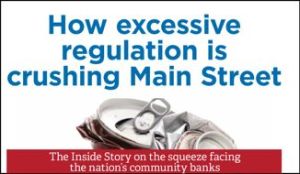It’s something ICBA and the community banking industry say all the time: community banks are the nation’s leading small-business lenders. And the numbers back it up. While community banks make up less than 20 percent of the banking system’s assets, they dole out more than half of its small-business loans.
Still, some small businesses continue to test their alternatives: megabanks, credit unions, and now online lenders. The latest set of numbers shows that these businesses should stick with a community bank.
According to a new study from seven Federal Reserve Banks, small businesses that apply for loans with community banks are the most successful and most satisfied.
Here’s what the study found:
- Community banks were the most likely to make a loan, extending financing to 76 percent of loan applicants while large banks approved just 58 percent.
- Community banks also had the highest satisfaction scores, with 75 percent reporting that they were satisfied with their overall experience, compared with scores of 56 percent for credit unions and 51 percent for large banks.
- While online lenders had the second-highest rate of approval at 71 percent, just 15 percent of borrowers said they were satisfied with the experience.
- Of the firms that were dissatisfied with their experience with online lenders, 70 percent cited high interest rates and 51 percent reported unfavorable repayment terms.
 With the amount of blood, sweat and tears that goes into launching a startup or expanding a small business, entrepreneurs should know that they have a partner in their local community bank. That is more important now than ever before, as demonstrated in a 2014 ICBA study that found that 41 percent of Millennials say they are very interested in starting up their own business.
With the amount of blood, sweat and tears that goes into launching a startup or expanding a small business, entrepreneurs should know that they have a partner in their local community bank. That is more important now than ever before, as demonstrated in a 2014 ICBA study that found that 41 percent of Millennials say they are very interested in starting up their own business.
So community bankers, let’s continue to spread the word about the importance of our industry in getting small businesses off the ground and taking our economy along with them. It’s an important message that everyone needs to hear, and now we have even more data to back it up.


